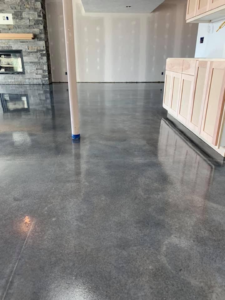Kitchen Remodel Near Me can take a lot of time and money, so you want to make sure it’s worth it. Be careful not to over-customize your kitchen. Overly customized features may limit your future home-buying audience.

Small kitchen facelifts offer a good ROI without the stress of a full remodel. Examples include painting cabinets, installing new hardware, or replacing countertops.
Cabinets are an essential kitchen feature that can make your life much easier by providing storage space for a variety of items. Whether it’s a convenient place to store your utensils and dinnerware, or a spot to showcase Grandma’s china, cabinets are an effective way to organize your kitchen and home. They can also make your home look more appealing and increase its value.
Having the right type of cabinets can help you save money in various ways. If you have to fumble around in your kitchen to find that can of ketchup or ginger, or you’re constantly losing items like silverware and ingredients, you could end up spending more money buying new stock. Organizing your cabinets can minimize that problem and ensure that you always have the necessary food and supplies on hand.
If you want to keep your cabinets organized and free of clutter, there are many different solutions available. For example, you can add sliding shelves to the cabinet interiors that can be moved from side-to-side for easy access. Or, you can install a lazy susan shelf that rotates to bring items stored in the back of the cabinet closer to the front, making it easier to retrieve them.
There are several types of cabinets, including base and wall. Base cabinets are typically placed on the floor and they support the countertops, while wall cabinets are mounted to the walls. Cabinets can be framed or frameless, depending on your design preferences and budget.
There are some important distinctions between cabinet types and construction styles, especially when it comes to the face frame, cabinet drawer, and cabinet door. This is because each of these parts plays a critical role in the final result of the cabinet itself.
Countertops
Countertops are one of the most visible features in a kitchen and can set the tone for the overall space. The type of material you choose and the style you opt for will determine how the room feels.
Lighter countertops make rooms feel larger, while dark ones create a cozy vibe. You can also use different materials to highlight or contrast with other features in the room. For example, black cabinets pair well with a light wood countertop to accentuate the natural hues in the room.
Laminate countertops are enjoying a resurgence thanks to advancements in printing technology that allow them to mimic stone, wood, and other materials at a fraction of the cost. They’re durable, stain-resistant and available in a variety of patterns and edge options to complement any design scheme.
Granite is still the top choice for most homeowners, offering a high-end look that adds to your home’s value. Its durability and resistance to acid, water and other chemicals makes it a smart choice for families. However, it does require a bit more care than manufactured quartz to keep its shine, including frequent wipe-ups of oils and other liquids and re-sealing.
Marble countertops are a luxurious option that can elevate the style of any kitchen. It’s important to keep in mind that it’s a natural stone and will vary, even within the same slab. The best way to ensure your marble counters stay looking new is to keep up with a regular cleaning routine that includes using a mild cleanser and warm water to prevent stains.
Soapstone is another naturally durable countertop material that can add warmth to your kitchen. It’s a good fit for rustic, cottage and country designs as its color palette is typically earthy. You’ll need to be diligent with maintenance, though, as soapstone can scratch and pit easily.
Appliances
A kitchen remodel is about more than just changing out appliances and cabinets. The process is a chance to create an ideal workspace that will inspire you to cook and bake more. It is also an opportunity to consider how appliances might impact your lifestyle and the environment.
Appliances are responsible for a significant share of global energy consumption and emissions. Tens of billions of appliances consume electricity or fuel, emit air pollution, and require further energy use and energy-related emissions during manufacture. Appliance efficiency, electrification, and decarbonization are key to achieving NZE and reducing climate risks.
For example, a kitchen that uses energy efficient appliances will spend less money on electricity bills. In addition, using these devices will help the environment by minimizing the exploitation of natural resources. Moreover, these devices can be recycled at the end of their lifespan, which will save more energy than it takes to produce a new one.
Similarly, installing smart appliances will enable you to monitor your energy usage from any location in the world. This will give you peace of mind when you’re not at home and help you make informed decisions about your energy usage. Additionally, these devices will allow you to connect with your appliances over the internet and make them more intelligent.
When shopping for appliances, you should keep in mind your space limitations and your budget. You should also make sure that the appliances you purchase are rated for safety and have a good warranty. It is also important to remember that quality doesn’t always equate to the highest price tag. You can find a wide range of appliances at different price points that offer great value for money.
Flooring
Once the structure of your kitchen remodel is complete and you’ve determined what you want to do with your space, it’s time to consider the floor. Whether you’re going for a cozy cottagecore aesthetic or a sleek modern design, the right flooring can set the tone for your cooking area and create a focal point in your home.
Hardwood floors are an excellent choice, blending beauty and durability with a timeless look. But if that’s out of your budget, check out wood-look tile and ceramic to create the look of natural hardwood with the added benefit of waterproof surfaces. Another popular kitchen flooring option is concrete, which can be stained and sealed to mimic the appearance of tile or stone and comes in a wide range of colors and patterns. If you like the look of tile but hate the chilly sensation it gives underfoot, opt for heated floors to warm up the surface under your feet.
If you’re willing to get creative, a patterned floor can become an eye-catching statement piece. For example, designer Bradley Stephens used varying terrazzo with brass lines in the kitchen of his New York apartment. Or go bold with intricate tile designs, such as the hypnotic red flower motif featured in this kitchen by Bre Bertolini.
Painting linoleum or wood flooring is also a simple yet budget-friendly way to breathe fresh life into an outdated kitchen. Literary couple Darryl Pinckney and James Fenton chose a dramatic Blue Period for their Harlem townhome kitchen, while the founder of interior design blog Damsel in Dior painted her floors a dark blue to match her risqué dining chairs. You can even paint your cabinets in bright hues to enliven your kitchen.
Lighting
When it comes to kitchen lighting ideas, think outside the standard recessed cans. Pendants, sconces and other fixtures can make your kitchen feel fresh and inviting. Layer your kitchen lighting to create a warm, inviting atmosphere that’s perfect for family gatherings or casual meals.
Chandeliers are making a comeback as an accent piece for modern, contemporary and farmhouse kitchens. Choose one with Edison-style bulbs for a retro look or opt for a fixture with sleek minimalist design to create a more modern aesthetic. If your space has a slanted ceiling, you can still get the coveted industrial look by choosing lights with flexible chains or using an adjustable rod, such as these from LZF.
If you want your kitchen to have a more traditional or industrial feel, consider adding pendants that feature frosted glass and aged bronze or unlacquered brass hardware. In this home designed by Kerrie Kelly, two Restoration Hardware Bistro Globe pendants elevate the space’s style.
Decorative fixtures also help bring your kitchen’s style together, such as these antique copper and bronze sconces in this home designed by Joe Lucas. These kitchen lighting ideas add warmth and texture to the kitchen’s neutral palette and blend with the home’s coastal décor.
Kitchen cabinets are a major expense, so it’s important to keep your remodel budget in mind when planning your kitchen. You may be able to save money by choosing a more cost-effective cabinet material, such as particleboard or painted MDF.
You can also save money by installing a DIY backsplash or by hiring a handyman to do the electrical work. By keeping your budget in mind, you can ensure your kitchen remodeling project stays within its intended scope.








